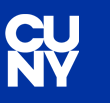
Publications and Research
Document Type
Article
Publication Date
10-29-2011
Abstract
There was a common belief that research should only be introduced at the graduate level or at least the senior undergraduate year. Research in the freshman year was not even a topic for discussion. Today, throughout the City University of New York, colleges are stepping forward and conducting research at all undergraduate levels and achieving good results. Conducting research as part of an internship or with a faculty member, proved to be one of the most effective ways to enhance the skills of the students in STEM by many authors. The department of Mechanical Engineering and Industrial Design Technology at New York City College of Technology, City Tech, has been focusing on research in the undergraduate level in the last three years in order to improve the quality of its graduates. The project started by half of the department faculty members who collaborated with Louis Stokes for Minority Participation in STEM, LSAMP, to implement research activities in freshman and sophomore classes. The work went further when the department obtained two major grants, NSF ATE and NASA CIPAIR. The NASA CIPAIR project is focusing in involving students in NASA and aerospace research in their early stages in college through building partnership with NASA. The project allows students to work in NASA active projects and faculty to collaborate with NASA scientists. Curriculum enhancement to include aerospace relevant material is a part of the project. A new course in Remote Sensing has been introduced as well. On the other hand, collaboration is built with Hostos Community College to allow the engineering students from Hostos to transfer to City Tech to get their bachelor degree in engineering technology. An articulation agreement between both colleges will enhance this transfer. This project represents the most critical, logical step in City Tech’s long-term plan to transform itself to a model institution for the education of under-represented students in STEM majors. The project is filling a critical gap in the engineering technology program offerings by making it more relevant to current industry needs (e.g., NASA) and creating curriculum and learning experiences for students that do not currently exist. Strategically, this project is another key piece in the college’s effort to overhaul and upgrade all its science, technology, engineering, and mathematics programs. The three years project will raise graduation and retention rates and prepare students to be the future workforce of NASA.


Comments
Gailani, G., & Berri, S., & ANGULO, N. (2011, October), Undergraduate Research Through NASA Initiatives Paper presented at 2011 Fall ASEE Middle Atlantic Section Conference, Temple University, Pennsylvania, https://doi.org/10.18260/1-2-1153-51072, © 2011 American Society for Engineering Education.